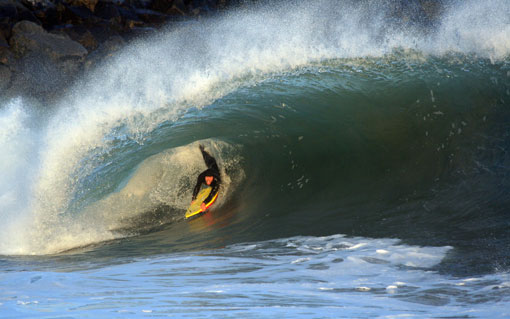- The problem which lead to the TRESB Project.
During the 1950's sandbars started forming along the river mouth, the short term solution to this problem was the extending of the breakwaters. The breakwater on the southern side of the Tweed River acted to trap sand that would naturally be moved in a northerly direction by longshore drift. The continual build‑up of sand on the southern side of the breakwater eventually caused the river mouth to once again silt up. It became apparent that continually extending the breakwaters was not the solution to providing a safe entrance to the Tweed River. This also caused beaches in a northerly direction to be malnourished. A proper solution was needed.
2. The solution to the problem.
The solution to this problem was a strategy known as TRESB. This stands for the tweed river entrance sand bypassing project. It aimed to re-create the natural longshore drift process of the coast, which hopefully would help the building up of sand in the tweed river area and would also help get sand up to beaches in the north (Gold Coast beaches). Sand is pumped from where it accumulates on the southern side of the Tweed River, via a system of pipes, across the Tweed River to one of four outlets where sand is released onto the beach.
3 The result of the project. What areas were effected and how? Do you think that it was a success?
The TRESB project is renowned as extremely successful. The result was that beaches of the Southern Gold Coast recieved a continual supply of sand and it also helped the problem of the Tweed River building up. The cooperation of the state and local governments helped this project massively. Both northerly beaches and the Tweed River areas were affected.






















